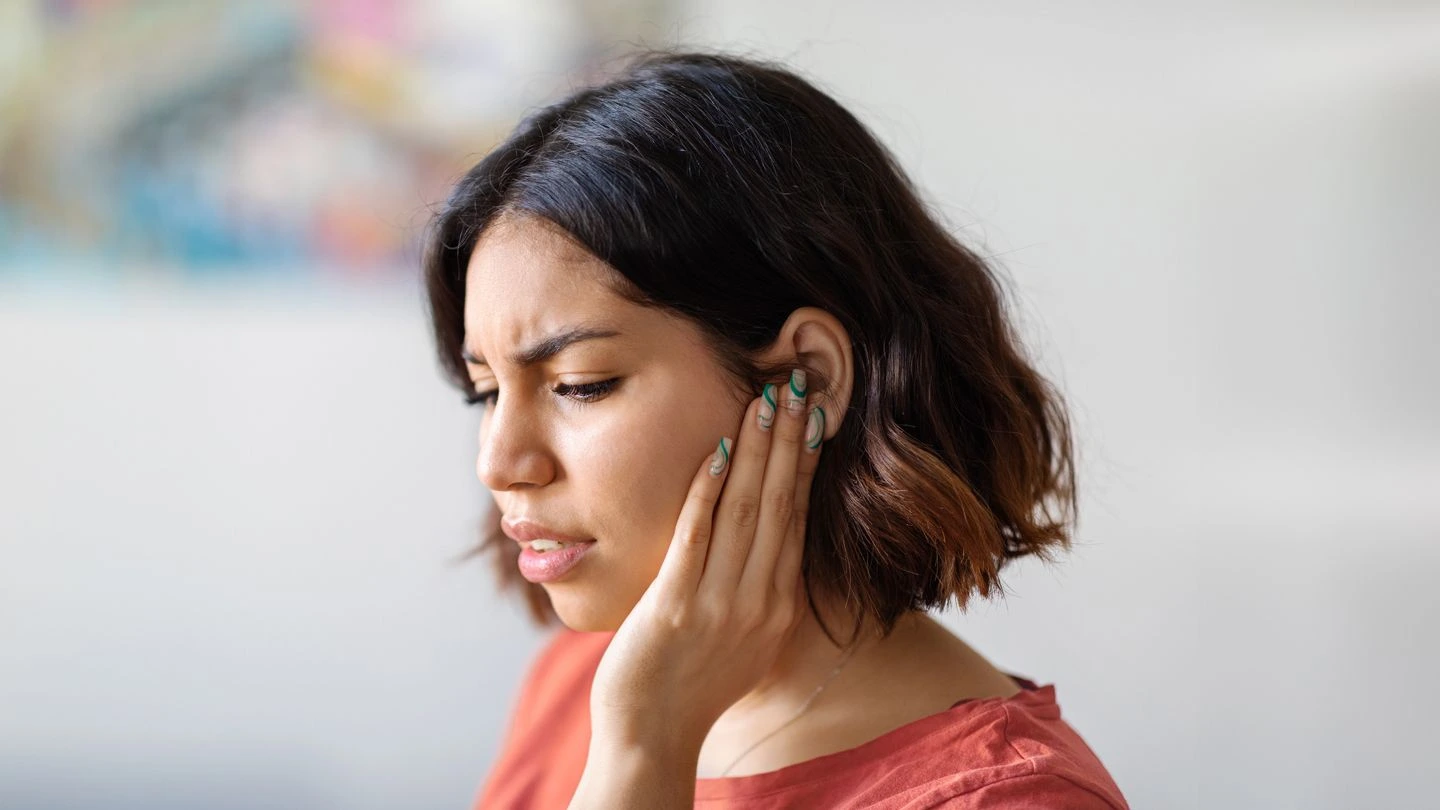Ever been in the middle of your favorite song when that familiar ache starts creeping into your ears? You’re not alone. As someone who’s spent countless hours with earbuds firmly planted in my ears – from morning commutes to late-night work sessions – I’ve experienced firsthand how these tiny audio devices can become instruments of discomfort.
In today’s always-connected world, earbuds have become as essential as our smartphones. Recent surveys show that over 73% of adults use earbuds daily, with the average person logging about 4.5 hours of earbud use per day. Yet nearly 68% of regular users report experiencing some form of ear discomfort or pain.
Also Read:
Does Driver Size Matter in Earbuds?
What Are the Different Types of Bluetooth Audio Codecs and How Do They Affect Sound Quality
How Do I Know When My Earbuds Are Fully Charged?
How Many mm Driver is Good for Earbuds?
How Long Should You Wear Earbuds a Day?
How Does the Microphone on Earbuds Work?
Can I Connect Smartwatch and Earbuds Together?
Is It Safe to Use Earbuds Without the Mesh?
TWS Earbuds Under 1000 INR
Tws Earbuds Under 1500 INR
TWS Earbuds Under 2000 INR
Whether you’re a podcast enthusiast, music lover, or someone who spends hours on video calls, this comprehensive guide will help you understand why your earbuds might be causing pain and what you can do about it. I’ve gathered insights from audiologists, researched the latest ergonomic designs, and tested countless solutions to bring you practical advice that actually works.
By the end of this article, you’ll have a complete toolkit to enjoy your audio experience without the unwelcome side effect of ear pain. Let’s dive in and rescue your ears from the tyranny of uncomfortable earbuds!
Understanding Ear Pain from Earbuds
The Anatomy of Your Ears and How Earbuds Affect Them
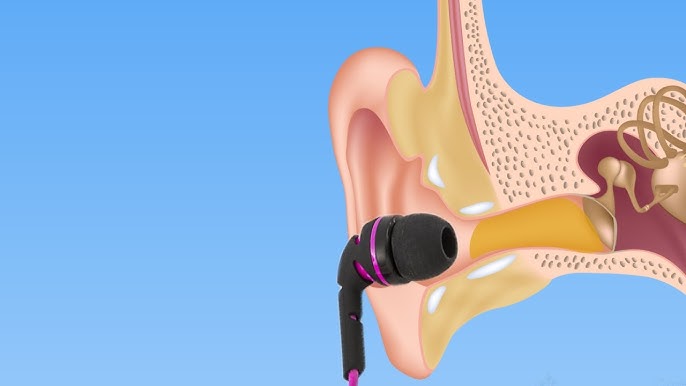
To understand why earbuds can cause discomfort, we need to look at the ear’s structure. Your ear has three main sections: the outer ear, middle ear, and inner ear. Earbuds primarily interact with the outer ear canal – that tunnel-like passage leading to your eardrum.
The ear canal isn’t just a simple tube; it’s lined with sensitive skin, contains tiny hairs, and produces earwax (cerumen). It’s also curved rather than straight, and its size and shape vary significantly from person to person. When you insert an earbud, you’re essentially placing a foreign object into this delicate ecosystem.
The average ear canal is about 2.5 centimeters long and 0.7 centimeters in diameter, but these measurements can vary widely. This explains why the “one-size-fits-all” approach to earbuds often fails – what’s comfortable for one person might be painfully tight or frustratingly loose for another.
Common Causes of Earbud-Related Ear Pain
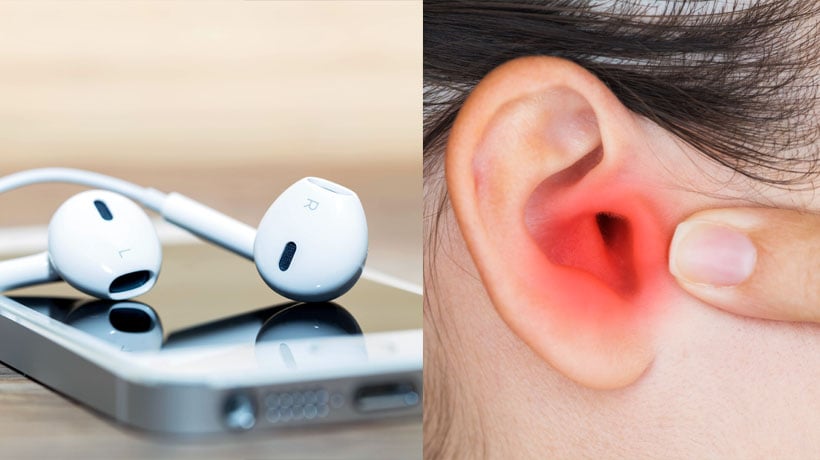
Improper Fit and Placement
The most frequent cause of earbud pain is simply a poor fit. When earbuds are too large, they create pressure against the ear canal walls, causing that familiar aching sensation. Conversely, if you’re constantly pushing them deeper to keep them from falling out, you’re likely irritating the sensitive skin inside.
Ear canal irritation occurs when the hard plastic or silicone of earbuds rubs against your ear canal. This friction can lead to soreness, especially during extended use or when you’re moving around a lot.
Extended Usage Without Breaks
Our ears aren’t designed for long-term object insertion. Extended earbud use without breaks prevents the natural cleaning process of your ear canal and can increase pressure sensitivity. The American Academy of Otolaryngology recommends taking a 5-minute break every hour when using earbuds.
I once spent an entire 8-hour workday with earbuds in, only removing them for a quick lunch break. By evening, my ears were throbbing, and it took nearly two days for the discomfort to fully subside. Our ears need regular breaks to “breathe.”
High Volume Levels
Listening at high volumes doesn’t just risk hearing damage – it can actually cause physical pain. When sound is too loud, the vibrations can irritate the eardrum and the delicate structures of the middle ear. This irritation often manifests as a dull ache or sharp pain.
The relationship between volume and comfort is clear: a 2023 study in the Journal of Audiology found that participants who regularly listened at volumes above 85 decibels were 40% more likely to report ear pain than those who kept volumes lower.
Poor Quality Earbuds
Not all earbuds are created equal. Lower-quality models often use harder plastics, have poorly designed shapes, or feature rough edges that can irritate your ears. The materials used in cheaper earbuds may also be more likely to cause allergic reactions in sensitive individuals.
Buildup of Bacteria and Earwax
Earbuds can interfere with your ear’s natural cleaning process by pushing earwax deeper into the canal. They can also introduce bacteria, leading to infections that cause pain. A 2024 study published in the International Journal of Audiology found that regular earbud users had 3.2 times more bacteria in their ear canals than non-users.
Different Types of Earbud-Related Pain
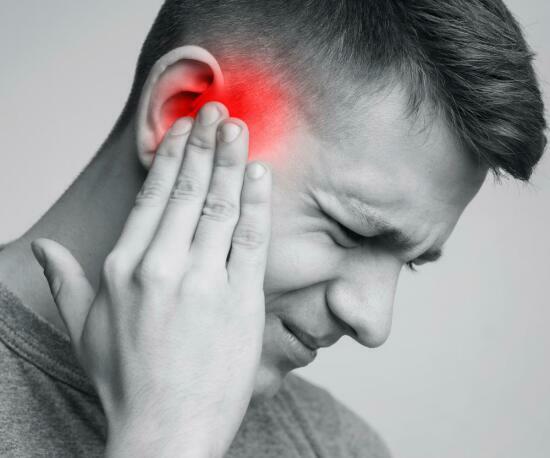
Understanding the specific type of pain you’re experiencing can help identify the cause:
| Pain Type | Description | Common Causes |
|---|---|---|
| Pressure Pain | Dull ache or feeling of fullness | Earbuds too large; extended wear |
| Contact Irritation | Soreness or rawness | Friction from earbud material; allergic reaction |
| Infection-Related | Sharp pain, possibly with itching or discharge | Bacterial buildup; compromised ear canal skin |
| Acoustic Pain | Discomfort during or after loud audio | Volume too high; poor quality audio |
| Referred Pain | Pain that extends to jaw, temple, or neck | Poor ergonomics; tension from trying to keep earbuds in place |
By identifying which type of pain you’re experiencing, you can better target your solution approach. For example, pressure pain might require different sized ear tips, while infection-related pain might need medical attention and improved cleaning habits.
Signs You Need to Address Earbud-Related Ear Pain
Common Symptoms to Watch For
Your body has ways of telling you when something’s wrong. With earbud use, here are the warning signs that shouldn’t be ignored:
- Persistent redness in or around the ear canal
- Ear pain that continues after removing earbuds
- Itchiness or irritation that gets worse over time
- A feeling of fullness or pressure that doesn’t subside
- Reduced hearing ability or muffled sounds
- Increased earwax production
- Skin flaking or peeling inside the ear
I remember dismissing a persistent itchiness in my ears as just “one of those things” until I noticed flakes of skin on my earbuds. This was my ear’s way of telling me I needed to change my habits – in my case, I was using alcohol-based wipes that were drying out my ear canal skin.
When Discomfort Becomes a Medical Concern
While some discomfort might be temporary, certain symptoms warrant medical attention:
- Pain that’s severe or worsening
- Any discharge from the ear (clear, white, or especially yellow/green)
- Ear canal swelling that affects hearing
- Fever accompanying ear pain
- Dizziness or balance problems
- Ringing in the ears (tinnitus) that persists after earbud use
If you experience any of these symptoms, it’s time to put the earbuds down and call a healthcare provider. These could indicate an ear infection, allergic reaction, or other conditions requiring treatment.
Long-term Risks of Ignoring Ear Pain
Continuing to use painful earbuds isn’t just uncomfortable – it can lead to more serious issues:
- Chronic external otitis (swimmer’s ear) – persistent inflammation of the ear canal
- Development of painful pressure sores or even small ulcers in the ear canal
- Permanent changes to ear canal shape from consistent pressure
- Increased risk of recurring ear infections
- Noise-induced hearing loss if pain is causing you to increase volume to overcome discomfort
- Thinning of ear canal skin, making it more vulnerable to damage
A colleague of mine ignored persistent ear pain for months, assuming it would eventually resolve itself. By the time she saw a doctor, she had developed a stubborn infection that required prescription ear drops and weeks without using any earbuds or headphones.
Immediate Relief Methods for Earbud-Related Ear Pain
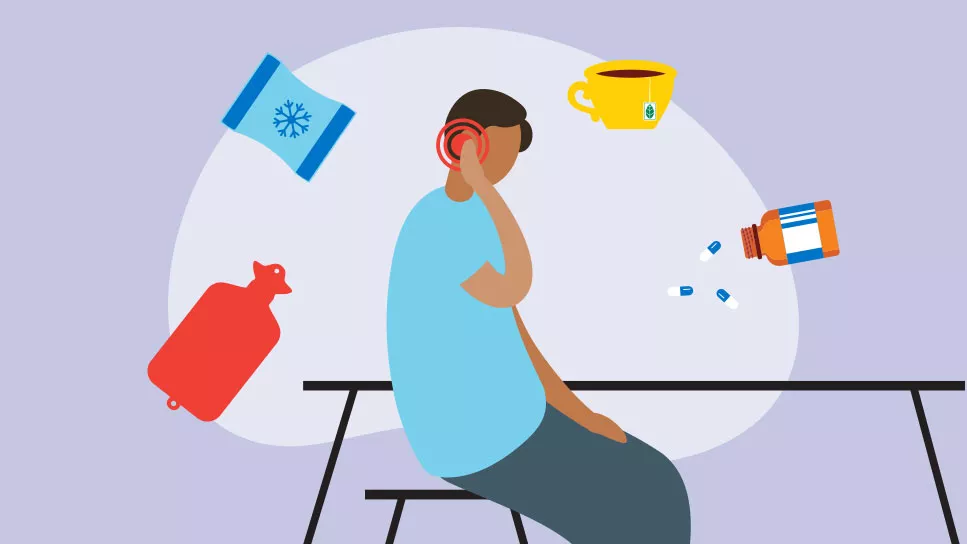
Removing Earbuds and Giving Ears a Rest
The simplest and most effective first step is to remove your earbuds completely. Your ears need time to recover, especially if you’ve been using earbuds for extended periods. I recommend a minimum 24-hour break if you’re experiencing noticeable pain.
During this recovery period, avoid inserting anything into your ears – including cotton swabs, which can push earwax deeper and potentially cause more irritation.
Warm and Cold Compress Techniques
Temperature therapy can provide significant relief:
- Warm compress: Soak a clean washcloth in warm (not hot) water, wring it out, and hold it against the outer ear for 5-10 minutes. The gentle heat increases blood circulation and can reduce pain. This works particularly well for pressure-related discomfort.
- Cold compress: For more inflammatory pain with noticeable redness or swelling, a cold approach might be better. Wrap an ice pack in a thin towel and apply it to the outer ear for 10 minutes. This can help reduce inflammation and numb the area.
I’ve found alternating between warm and cold (10 minutes warm, followed by 10 minutes cold) provides the most relief for my ears after a day of too much earbud use.
Over-the-Counter Pain Relief Options
For more significant discomfort, over-the-counter pain relievers can help:
- Non-steroidal anti-inflammatory drugs (NSAIDs) like ibuprofen can reduce both pain and inflammation
- Acetaminophen (Tylenol) can help with pain but doesn’t address inflammation
- Topical pain relievers specifically formulated for ears are available, but consult with a pharmacist before using these
Always follow package directions and consult with a healthcare provider if you’re unsure which medication is appropriate for your situation.
Gentle Massage Techniques
Gentle massage around the ear can help relieve tension and improve circulation:
- Use your index and middle fingers to make small circular motions just in front of your ear
- Move to the area behind your ear, continuing the gentle circles
- Lightly pull your earlobe downward, then in different directions
- Apply gentle pressure to the tragus (the small cartilage flap in front of your ear canal)
Keep the pressure light – you’re aiming for relief, not additional discomfort. A one-minute massage a few times daily can make a noticeable difference in ear comfort.
Natural Remedies
Several natural approaches may provide relief:
- Garlic oil: Known for its antimicrobial properties, warm (not hot) garlic oil can help if your pain might be infection-related. Place 1-2 drops in the affected ear, then plug with a cotton ball. (Note: never use if you suspect a perforated eardrum)
- Ginger or basil juice: These have anti-inflammatory properties. Mix a few drops with a teaspoon of carrier oil like olive oil, warm slightly, and apply 1-2 drops to the ear.
- Hydrogen peroxide solution: A 3% solution can help dissolve excessive earwax. Use 1-2 drops, let it bubble for a minute, then tilt your head to let it drain out.
I personally keep a small bottle of olive oil with a drop of tea tree oil mixed in. When my ears feel irritated, a single drop in each ear before bed often resolves the discomfort by morning.
Exercises to Relieve Pressure
If your ear pain feels like pressure or fullness, these exercises might help:
- Jaw movement: Open your mouth wide, then move your jaw in a circular motion for 30 seconds
- Ear tugging: Gently pull your earlobe in different directions
- Valsalva maneuver: Pinch your nose closed, close your mouth, and gently try to blow air through your nose (be very gentle with this one)
- Chewing movement: Pretend you’re chewing gum with slightly exaggerated movements for 30 seconds
These exercises can help open the Eustachian tubes and equalize pressure between your middle ear and throat.
Prevention Strategies: Better Earbud Habits
The 60/60 Rule for Volume and Duration
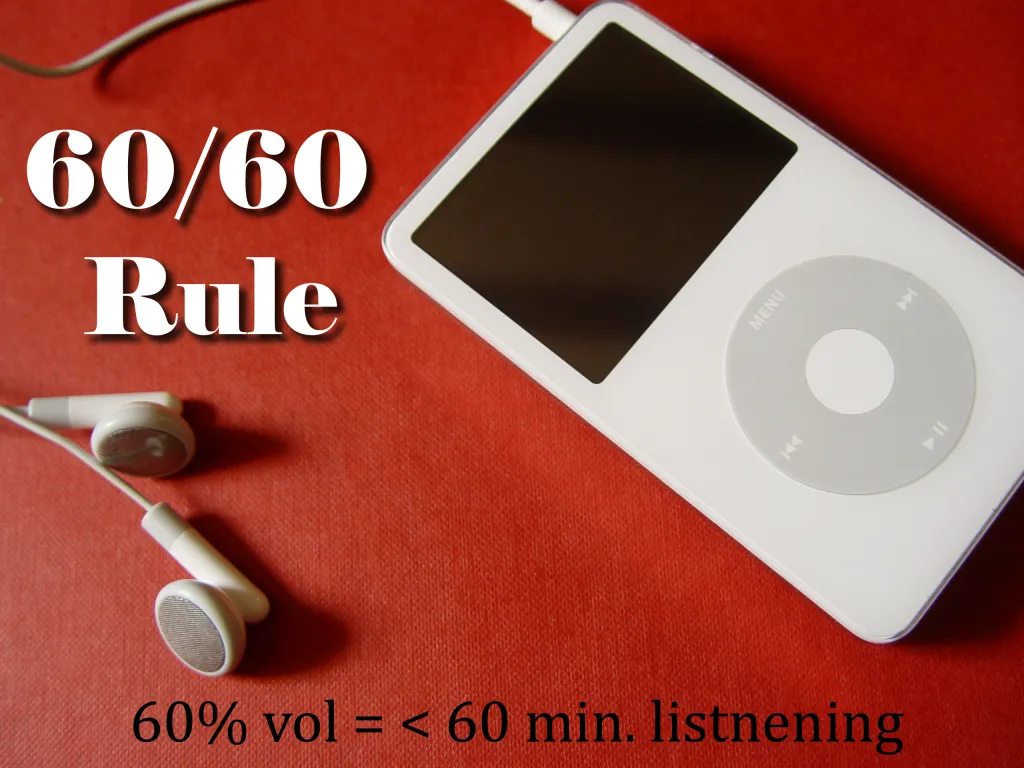
One of the simplest rules to follow is the 60/60 rule:
- Keep volume below 60% of maximum
- Listen for no more than 60 minutes at a time
After each 60-minute session, take a break for at least 10 minutes to give your ears time to recover. This simple habit can dramatically reduce both pain and the risk of hearing damage.
I’ve set a timer on my phone that reminds me to take these breaks, and it’s made a tremendous difference in my comfort level, especially during long workdays.
Proper Insertion Techniques
Many people unknowingly insert their earbuds incorrectly, causing unnecessary pressure and discomfort:
- For standard earbuds: Place them gently at the entrance of your ear canal, angling slightly forward. They should rest comfortably without being forced in.
- For in-ear monitors (IEMs): Gently pull your outer ear up and back to straighten the ear canal, then insert with a slight twisting motion. This helps achieve a better seal without excessive pressure.
- For earbuds with wings or hooks: Position the stabilizing feature first, then place the earbud portion.
The key is gentle placement – never force an earbud deeper to improve sound or fit. If you find yourself constantly adjusting or pushing them in, that’s a sign you need a different size or style.
Regular Cleaning Protocols
Clean earbuds are comfortable earbuds. Here’s a simple cleaning routine:
- Wipe down earbuds daily with a slightly damp microfiber cloth
- Once weekly, use a cotton swab lightly dampened with isopropyl alcohol (70%) to clean non-mesh surfaces
- For silicone tips, remove them weekly and soak in warm soapy water for 5 minutes, then rinse and dry completely
- Use a soft brush (like a clean toothbrush) to gently remove debris from mesh screens
For your ears:
- Never insert anything smaller than your elbow into your ear canal (including cotton swabs)
- Consider using 1-2 drops of mineral oil once weekly to help natural earwax migration if you’re prone to buildup
I keep a small cleaning kit (microfiber cloth, alcohol wipes, and a soft brush) in my desk drawer, making it easy to maintain clean earbuds without much effort.
Proper Storage Practices
How you store your earbuds affects both their longevity and your ear health:
- Always store in a clean, dry case when not in use
- Avoid wrapping cords tightly around devices or cramming earbuds into pockets
- Keep earbuds away from extreme temperatures and humidity
- Consider a UV sanitizing case, which can kill up to 99.9% of bacteria
Proper storage prevents damage to the earbuds that could create rough edges or altered shapes that might irritate your ears. It also reduces exposure to bacteria that could cause infections.
Taking Scheduled Breaks
Even with perfect earbuds, your ears need regular breaks:
- Follow the 60/60 rule mentioned earlier
- Try alternating between earbuds and speakers when possible
- Consider using just one earbud at a time for calls or casual listening, giving each ear a rest
- Plan “earbud-free” days each week to give your ears complete recovery time
I’ve started implementing “Speaker Sundays” – a full day where I only use speakers instead of earbuds. This simple habit has noticeably reduced my overall ear fatigue throughout the week.
Ear Hygiene Practices
Maintaining healthy ears makes them more resilient to earbud-related discomfort:
- Gently clean the outer ear with a washcloth during showers
- Consider using an ear rinse of equal parts white vinegar and rubbing alcohol after swimming or heavy sweating (1-2 drops, then drain)
- If you produce excessive earwax, consult a doctor about safe removal methods
- Stay hydrated, as dehydration can affect earwax consistency
Remember that earwax is protective – the goal isn’t to eliminate it completely but to prevent excessive buildup that might interact poorly with earbuds.
Choosing the Right Earbuds to Minimize Pain
Different Types of Earbuds and Their Comfort Levels
Not all earbuds are created equal when it comes to comfort:
| Earbud Type | Comfort Level | Best For |
|---|---|---|
| Standard Earbuds | Moderate | Short listening sessions; those who dislike in-ear pressure |
| In-Ear Monitors (IEMs) | Varies by design | Sound isolation; secure fit for activity |
| Semi-Open Earbuds | High | Sensitive ears; longer listening sessions |
| Bone Conduction | Very High | Those with ear canal sensitivity; awareness of surroundings |
| True Wireless | Varies by design | Convenience; freedom of movement |
| Custom-Molded | Very High | Professional use; maximum comfort for long sessions |
I switched from standard IEMs to semi-open earbuds last year and immediately noticed a reduction in ear fatigue and pressure. The trade-off was slightly less bass response and sound isolation, but the comfort improvement made it worthwhile for my daily use.
Features to Look for in Pain-Reducing Earbuds
When shopping for more comfortable earbuds, prioritize these features:
- Multiple ear tip sizes included (at least S/M/L)
- Memory foam tips option (conforms to ear canal shape)
- Lightweight design (under 10 grams per earbud for wireless)
- Ergonomic shape that distributes pressure evenly
- Smooth, rounded surfaces with no sharp edges
- Hypoallergenic materials (medical-grade silicone or similar)
- Pressure relief vents to reduce the “plugged” feeling
The most comfortable earbuds I’ve tried featured a combination of memory foam tips, an ultra-lightweight design (just 4.6 grams per earbud), and small pressure relief vents that prevented that sealed-in feeling that often leads to discomfort.
Comparison of Popular Earbud Models for Comfort
Here’s how some popular models compare specifically for comfort:
| Model | Comfort Features | Weight | Ear Tip Options | Best For |
|---|---|---|---|---|
| Apple AirPods Pro | Pressure equalization vents, multiple tip sizes | 5.4g each | Silicone (S/M/L) | Sensitive ears needing pressure relief |
| Samsung Galaxy Buds Pro | Ergonomic design, air vents | 6.3g each | Silicone (S/M/L) | Extended wear with moderate activity |
| Bose QuietComfort Earbuds | StayHear Max tips, balanced pressure | 8.5g each | Proprietary silicone (S/M/L) | Maximum comfort with noise cancellation |
| Jabra Elite 75t | Compact design, pressure relief | 5.5g each | Silicone (S/M/L) | Smaller ear canals |
| Sony WF-1000XM4 | Foam tips, ergonomic shape | 7.3g each | Memory foam (S/M/L) | Those seeking foam tip comfort |
Remember that individual ear anatomy varies greatly – what works perfectly for one person might be uncomfortable for another. When possible, try before you buy or purchase from retailers with good return policies.
Custom-Fit Options
For those with particularly sensitive ears or who use earbuds professionally, custom-fit options provide the ultimate comfort:
- Professional custom-molded IEMs: Created from impressions of your ear canals, these offer perfect fit but cost $200-$2000+
- DIY custom-molding kits: Available for $30-100, these allow you to create custom ear tips at home
- 3D-printed custom tips: Some companies can create custom tips based on smartphone scans of your ears
I tried a DIY molding kit for my favorite earbuds, and while the process was a bit messy, the resulting custom tips eliminated pressure points completely and created a perfect seal without discomfort.
Alternative Listening Devices
Sometimes the best solution is to consider alternatives to traditional earbuds:
- Over-ear headphones: Distribute pressure around the ear rather than in the canal
- Bone conduction headphones: Transmit sound through cheekbones, leaving ears completely open
- Air conduction earbuds: Rest near but not in the ear canal
- Single-ear Bluetooth headsets: Allow one ear to remain completely free
For my longest listening sessions (like international flights), I’ve switched to lightweight over-ear headphones that eliminate all ear canal pressure while still providing excellent sound quality and noise isolation.
Earbud Accessories and Modifications
Replacement Ear Tips (Sizes, Materials, Benefits)
The ear tip is the part that makes direct contact with your ear canal, making it the most important factor in comfort:
Sizes:
Most earbuds come with small, medium, and large tips, but this limited range doesn’t fit everyone. Consider third-party options that offer more sizes, including extra small and extra large. Some brands even offer in-between sizes like medium-large.
Materials:
- Silicone: Most common, durable, easy to clean
- Memory foam: Conforms to ear shape, excellent noise isolation
- Hybrid (silicone-foam): Combines durability with comfort
- Rubber: Less common, can be very comfortable for some users
- Thermoplastic elastomers (TPE): Soft, flexible, and hypoallergenic
Benefits of upgrading ear tips:
- Improved comfort for extended wear
- Better sound isolation
- Reduced risk of earbuds falling out
- Can enhance audio quality by ensuring proper seal
I personally swear by Comply foam tips. They’re a bit pricier than standard silicone, but the comfort difference is night and day for my ears. They conform perfectly to my ear canal, providing a secure fit without any pressure points.
Cushioning Options
For earbuds that sit outside the ear canal, additional cushioning can make a big difference:
- Foam covers: Slip over standard earbuds to provide a softer surface
- Silicone skins: Add a layer of soft silicone to the earbud body
- Custom-molded attachments: Create a perfect fit for your ear shape
These options are particularly useful for earbuds with hard plastic bodies that can cause discomfort over time.
Ear Hooks and Stabilizers
If your earbuds tend to fall out or require frequent adjustment (which can lead to irritation), consider:
- Over-ear hooks: Loop over the top and back of your ear for added stability
- Wingtips/fins: Small silicone pieces that nestle into the outer ear folds
- Neckbands: Connect your earbuds, distributing weight and reducing pull
I added silicone ear hooks to my workout earbuds, and it’s made a world of difference. Not only do they stay put during intense exercise, but I also no longer feel the need to constantly push them back in, which was causing soreness.
Custom-Molded Solutions
For the ultimate in comfort and fit, custom-molded options are worth considering:
- Professional custom IEMs: Made by an audiologist, these are pricey but offer perfect fit
- DIY molding kits: Allow you to create custom ear tips at home
- 3D-printed custom tips: Some companies use ear scans to create perfectly fitted tips
While expensive, custom solutions can be a game-changer for those who use earbuds extensively or have particularly sensitive ears.
Special Considerations for Different Users
Children and Teenagers
Young ears are more sensitive and still developing, requiring extra care:
- Volume limiting earbuds: Many brands offer models that cap volume at safe levels
- Proper sizing: Adult-sized earbuds may be too large, causing discomfort or poor fit
- Education: Teach kids about safe listening habits early
- Parental controls: Use smartphone settings to limit volume
As a parent, I’ve found that volume-limiting earbuds combined with regular check-ins about comfort have helped my teenager develop responsible listening habits.
People with Sensitive Ears
Some individuals have naturally more sensitive ear canals:
- Opt for softer materials like memory foam tips
- Consider semi-open or bone conduction designs
- Use earbuds for shorter periods, taking more frequent breaks
- Experiment with different insertion depths to find the most comfortable position
Individuals with Pre-existing Ear Conditions
Those with conditions like chronic otitis externa or tinnitus should take extra precautions:
- Consult an ENT doctor before regular earbud use
- Consider over-ear headphones as an alternative
- Use the “open-fit” style earbuds that don’t seal the ear canal
- Be extra vigilant about cleaning and hygiene practices
Professional Users (Call Centers, Musicians, etc.)
For those who rely on earbuds for work:
- Invest in high-quality, professional-grade earbuds or IEMs
- Consider custom-molded options for all-day comfort
- Implement strict cleaning and maintenance routines
- Use a backup pair to allow regular switching and cleaning
- Schedule “ear breaks” into the workday
As a musician, I’ve found that investing in custom-molded IEMs was a game-changer for long rehearsals and performances. The initial cost was high, but the comfort and sound quality improvements were well worth it.
When to Seek Medical Help
Warning Signs that Require Professional Attention
While some discomfort is common, certain symptoms warrant immediate medical attention:
- Severe pain that doesn’t subside after removing earbuds
- Any discharge from the ear (clear, white, or colored)
- Sudden hearing loss or significant change in hearing ability
- Persistent ringing in the ears (tinnitus) that doesn’t improve
- Dizziness or balance problems associated with earbud use
- Signs of infection: fever, swelling, or redness around the ear
Don’t hesitate to consult a healthcare provider if you experience these symptoms. Early intervention can prevent more serious complications.
What Treatments a Doctor Might Recommend
Depending on the cause of your ear pain, a doctor might suggest:
- Prescription ear drops for infections
- Removal of impacted earwax
- Topical treatments for skin irritation in the ear canal
- Oral antibiotics for severe infections
- Recommendations for alternative listening devices
- Hearing tests to check for any damage
Specialists to Consult for Persistent Ear Pain
If you’re experiencing ongoing issues, consider consulting:
- Otolaryngologist (ENT): Specializes in ear, nose, and throat conditions
- Audiologist: Focuses on hearing health and can recommend appropriate devices
- Dermatologist: For skin-related issues in the ear canal
I once ignored persistent ear pain for weeks, assuming it would resolve on its own. When I finally saw an ENT, they diagnosed a mild infection that quickly cleared up with prescription drops. The lesson? Don’t wait too long to seek professional help.
Long-term Ear Health While Using Earbuds
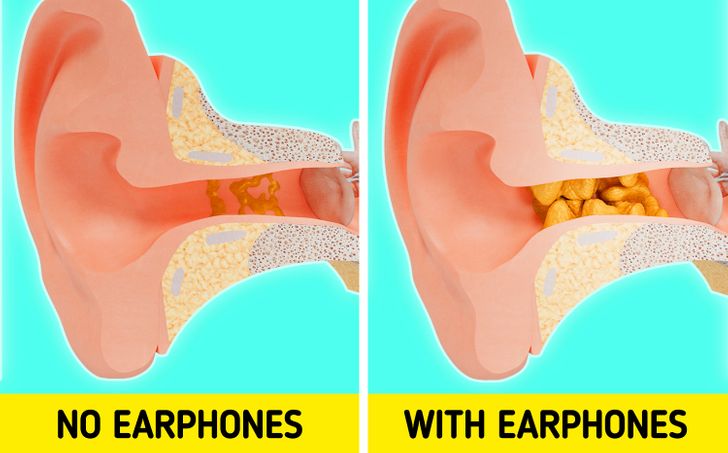
Balancing Technology Use with Ear Health
In our connected world, completely avoiding earbuds isn’t practical for most people. Instead, focus on balance:
- Implement regular “earbud-free” days or hours
- Alternate between earbuds and speakers when possible
- Use noise-cancelling features to allow lower volumes
- Consider bone conduction headphones for some activities
Regular Ear Check-ups
Just as you have regular dental check-ups, consider adding ear health to your routine:
- Annual hearing tests, especially if you use earbuds frequently
- Regular cleaning and examination by an ENT or audiologist
- Self-checks for any changes in comfort, fit, or hearing ability
Hearing Protection Strategies
Protect your ears beyond just earbud use:
- Use earplugs in loud environments (concerts, construction sites, etc.)
- Be mindful of overall daily noise exposure
- Give your ears “recovery time” after exposure to loud noises
- Consider custom-molded musicians’ earplugs for high-fidelity sound protection
Future Innovations in Earbud Technology
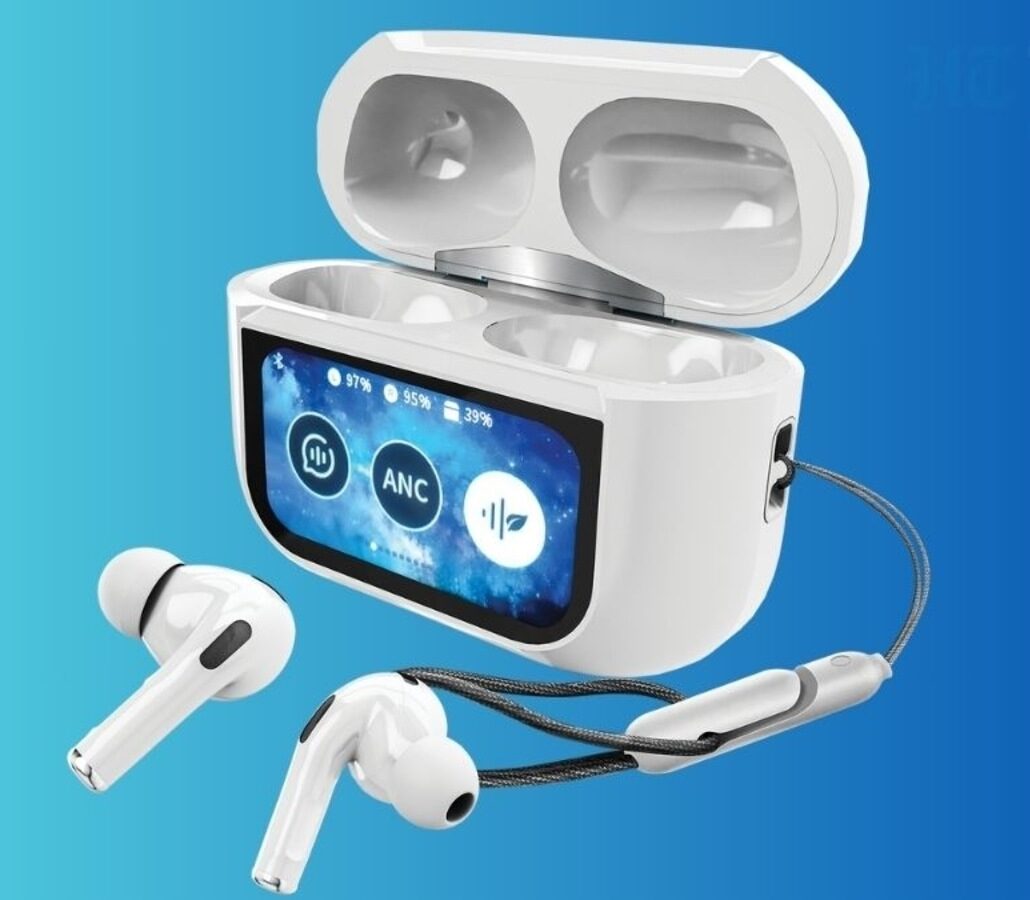
Exciting developments are on the horizon:
- AI-driven personalized sound: Adapts to your unique hearing profile
- Advanced materials: More biocompatible and comfortable designs
- Health monitoring: Earbuds that can track vital signs and ear health
- Improved noise cancellation: Allowing lower volumes in noisy environments
Keep an eye on these innovations – they may offer solutions to current comfort and health challenges.
Conclusion
Earbud-related ear pain is a common but solvable problem. By understanding the causes, implementing preventive strategies, and choosing the right products, you can enjoy your audio experience without discomfort. Remember:
- Prioritize comfort and fit over brand names or trends
- Develop healthy listening habits, including regular breaks
- Keep your ears and earbuds clean
- Don’t ignore persistent pain or discomfort
- Stay informed about new technologies and best practices
Your ears are precious – treat them with care, and they’ll continue to bring you the joy of sound for years to come.
FAQs About Ear Pain from Earbuds
1. Can earbuds cause permanent damage to my ears?
While occasional discomfort isn’t usually harmful, prolonged misuse of earbuds can lead to hearing damage or chronic ear problems. Always use them responsibly and at moderate volumes.
2. How often should I clean my earbuds?
Wipe them down daily with a soft, dry cloth. Do a deeper clean weekly, including removing and washing removable tips.
3. Is it normal for new earbuds to cause some discomfort?
A short adjustment period is normal, but persistent pain isn’t. If discomfort continues after a few days of use, try different tips or consider a different model.
4. Can I use earbuds if I have a history of ear infections?
Consult with your doctor first. If approved, be extra vigilant about cleaning and limit use during active infections.
5. Are more expensive earbuds always more comfortable?
Not necessarily. While higher-end models often offer better materials and fit options, comfort is highly individual. Sometimes a less expensive model might fit your ears better.

